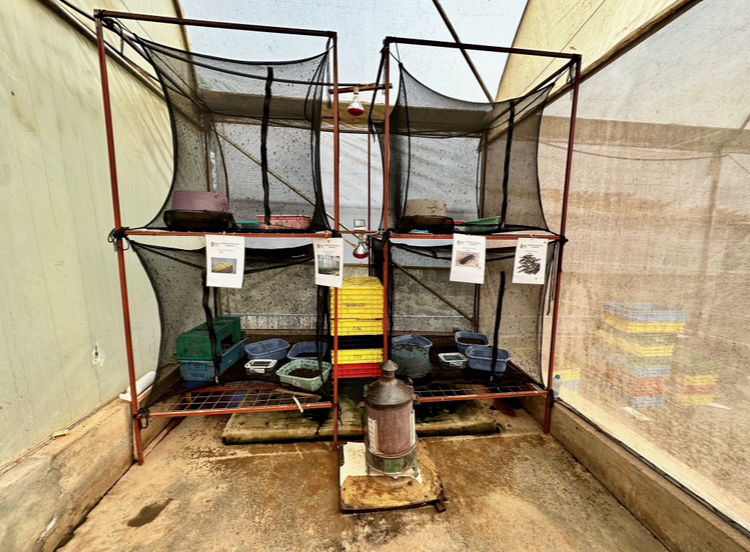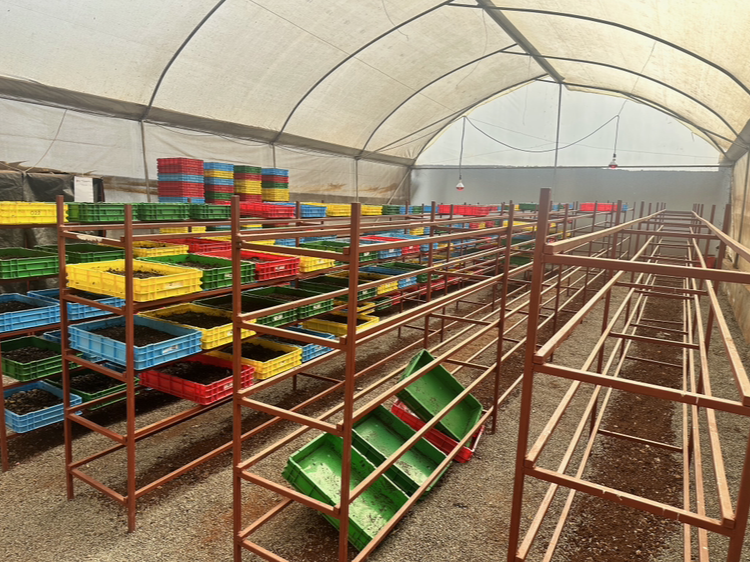What does waste have to do with adaptation? And how to turn a problem into a business opportunity
Photo credit: Akiba Mashinani Trust (AMT)
Like urban informal settlements around the world, Mukuru, home to over 400,000 people and one of the largest informal settlements in Nairobi, Kenya, is severely affected by flooding. In May 2024, for instance, 210 people were killed by floods, with a further 90 missing, when Cyclone Hidaya ravaged East Africa over numerous weeks. Hundreds of homes in Mukuru were knocked down following a government order for anyone living near rivers to leave their homes to prevent further deaths by flooding.
Flooding also has multiple other negative impacts on Mukuru residents. Pools of sewage accumulate as pit latrines fill up and raw fecal waste overflows into homes and public spaces due to the area’s high-water table. This occurrence leads to an increased risk of water-borne diseases such as malaria and cholera which often cause severe illness or death.
Improved drainage and sanitation systems were built in Mukuru to reduce flooding and associated risks as part of implementing a People’s Plan developed by the residents. However, these systems lose their effectiveness when they are clogged with garbage. With no garbage collection facilities available, the residents of the Mukuru have little choice but to throw their garbage into drains, and into the Ngong River, which flows through the settlement. This increases flood risk and contaminates a precious source of water.
Akiba Mashinani Trust (AMT), a grassroots organization that is supporting the People’s Plan process, carried out research in April 2019, to determine the amount and composition of waste generated at a household level. They found that 72.5% of all waste generated was organic, 20.3% was recyclable and 7.1% was non-recyclable or hazardous matter. Dealing with the organic and recyclable waste was identified as solution for reducing flood risk.
AMT identified black soldier fly (BSF) farming as a potential solution to the problem of organic waste and sought support from the GCA. Native to many regions of Africa, the black soldier fly is a non-pest insect known for its remarkable waste-conversion abilities. With its voracious appetite for organic waste, rapid growth rate, and nutrient-rich larvae, this fly offers a multi-faceted solution to the twin challenge of biowaste management and climate change.
The flies lay eggs in decaying matter where the larvae develop. As they feed, the larvae break down a wide range of organic materials, from food scraps to animal manure, agricultural residues, and even sewage sludge. The waste material is converted into two highly valuable resources for the agriculture sector: protein-rich larvae biomass and nutrient-rich natural fertilizer or “frass”.
The larvae themselves are a protein-rich food source for animals, offering a sustainable alternative to traditional livestock feed. The nutrient-rich frass, meanwhile, can be used as a potent fertilizer, replacing synthetic fertilizers that contribute to climate change through high energy consumption at manufacture, nitrogen oxide emissions during production and use, and soil health degradation and water pollution after use.

BSF farming was also identified as a potential livelihood source for the youth in Mukuru.
With support from the GCA, 12 BSF units are being built in Mukuru – ten with direct support from the GCA, and an additional two through indirect support. Funds for one of these two units were provided by the African Development Bank’s Kenya - Nairobi Rivers Basin Rehabilitation and Restoration Program: Sewerage Improvement Project -Phase II. While this project was able to support the “hardware” (the building of the unit itself), there were no provisions for supporting critical “software” (buy-in and engagement of the community, in sorting and supplying the waste, and training for the young people to run the units). The GCA therefore facilitated a connection with DanChurchAid (DCA), an organization with considerable experience in insect farming in Africa. DCA provided technical expertise to refine AMT’s plan, funding for the software associated with the AFDB funded BSF unit, and support for an additional BSF Unit.
Each BSF unit processes around three tons of waste per every two-week cycle, totaling approximately six tons per month. At optimal production, each unit can produce 600 kilograms of frass and 1,200 kilograms of larvae from three tons of waste, yielding approximately US$800 per cycle.


Training the young
Young people who were already engaged in waste management in Mukuru received the BSF initiative enthusiastically, as a means to augment income, provide a financial buffer against losses incurred when tenants fail to remit garbage collection fees, and its potential contribution to curbing crime and drug abuse, fostering enhanced security within the settlement.
A hundred young people were initially identified, and divided into 22 youth waste management groups. They were enrolled in a three-month NITA certified training program on BSF farming and business management in Miramar International College. Two cohorts of 60 youth completed their examinations and graduated in May 2024, while a third cohort has been enrolled.
Following the training, the youth groups conducted a self-assessment based on proposed activities, governance, management, business models, key partnerships, community engagement, sustainability, and environmental and social impact. An independent assessment followed, through a two-phased process, using a proposal assessment tool developed in consultation with the youth. The tool included parameters for the BSF units, including size, accessibility, location, ownership, security, and other considerations. The first selection phase was led by the Nairobi City Water and Sewerage Company, which selected 15 groups. The remaining seven groups were encouraged to persist in finding suitable spaces. In the second phase, Miramar surveyed the spaces for the units identified by the 15 groups and found 12 suitable for BSF units. The units were then built by the young people, under the guidance of Miramar.

At the same time, a process for community awareness, mobilization and organization was initiated, including by GIS mapping of plots (typically with 100 houses) to be targeted for waste collection. Each plot was assigned a unique plot number (using a numbering system adopted by the Nairobi City Water and Sewerage Company). 1,730 plots representing approximately 6,920 households were mapped and numbered. The residents of these plots were then trained on proper waste management practices, such as waste separation and disposal. Clusters of 100 households were formed, to meet regularly and implement proper waste handling. 1,730 plot meetings took place, to gather information on waste management practices and to select a representative to attend training on waste management. Plot and cluster representatives will play a significant role in connecting their residents with the youth running the BSF units.
The frass and larvae produced by the Mukuru units will be purchased by Miramar International College. While initial production has started, watch this space for more information on the economics of BSF production, and how it benefits flooding and youth employment.